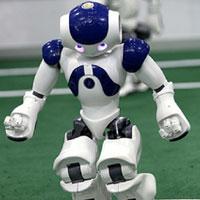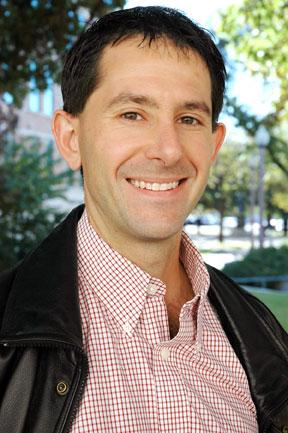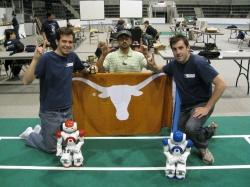

Student programmers are members of the TT and UT Austin Villa, a cross-institutional team that helps students solve real-world problems in artificial intelligence. UT professor Peter Stone, TT professor Mohan Sridharan (UT-Ph.D. '07), and UT Postdoc Dr. Michael Quinlan lead the team in the Standard Platform League (SPL). In the SPL, each team competes with identical Aldebaran Nao robots. Since the hardware is identical for all teams, the focus is on the programming.

Students compete in simulated and real robot soccer. The robots are programmed to sense their environments, make a decision about which action to execute, execute it, then determine if the action was successful. In research terms, they are interacting as independent agents in a multiagent system and learning through trial and error—or through reinforcment learning.

Stone still plays winning soccer. He is in the open division in Austin's premier amateur league and his students won the 2009 RoboCup US Open championship. For video and more information, see http://www.cs.utexas.edu/~AustinVilla/.



